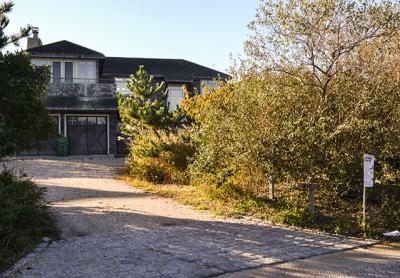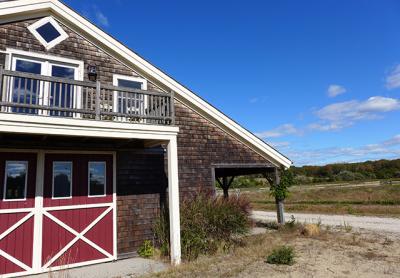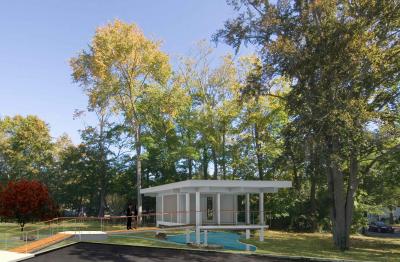Questions on Dunes Teardown
Questions on Dunes Teardown

A public hearing on a plan to demolish a 3,800-square-foot house at 261 Marine Boulevard in Amagansett and replace it with a larger one brought a series of strict land-use regulations before the East Hampton Town Zoning Board of Appeals Tuesday night.
The owners of the 36,000-square-foot oceanfront parcel, Sandra Leong and Robert Gelfond, bought it in February for just under $11 million. They want to build a 5,236-square-foot, two-story house there with 1,372 square feet of decking and an 846-square-foot swimming pool. The area covered by the existing house would be revegetated and the new house moved closer to the road.
In order to meet Federal Emergency Management Agency regulations, the new house would have to be 12 feet above sea level, which creates the need for several variances of the pyramid law, which is designed to prevent structures from looming over neighbors. In addition, setback variances, from the street and side of the property, are being sought as well as permission to exceed the permitted floor area by 116 square feet.
In a memo from Tyler Borsack, a planner for the town, the board was asked to weigh the benefits of the proposal, which calls for the new structure to be pulled back from the dunes and for a new septic system, versus the numerous variances requested. The new septic system would be farther from wetlands than the system in place. The current house, in the Ocean Dunes subdivision, apparently was built in 2000.
Charles Bowman of Land Use Ecological Services explained the proposal to the board, saying that the applicants were caught “between a rock and a hard place.” He said, “We are encouraging people to retreat from the ocean.” Ms. Leong and Mr. Gelfond, he said, were the rare owners actually eager to do so.
At one point, as Mr. Bowman spoke of rebuilding, David Lys, a board member, said, “You are not rebuilding. You are redeveloping.” Mr. Lys also expressed concern about proposed four-foot-high retaining walls. “I’m trying to think about the neighborhood,” he said.
Chris Coy, a principal architect with Barnes Coy, a firm known for modernist work, told the board that pyramid variances were forced on the applicants not only by FEMA, but because New York State has “limit of moderate wave action” rules, meaning the height from sea level would have to be 14 feet rather than 12.
“These people have four kids, and that is just not enough for their needs,” he said. He told the board that because of FEMA rules, the mechanical room (for air conditioning, heat, etc.) has to be in the living area. Subtracting the mechanical room, the floor area is just under 5,000 square feet, he said.
The board now has 62 days to make a decision.
Because John Whelan, the Z.B.A. chairman, was not at the meeting, no decisions on recent hearings were announced. With the board off on Tuesday, due to Election Day, the Nov. 15 work session is likely to be a busy one.



